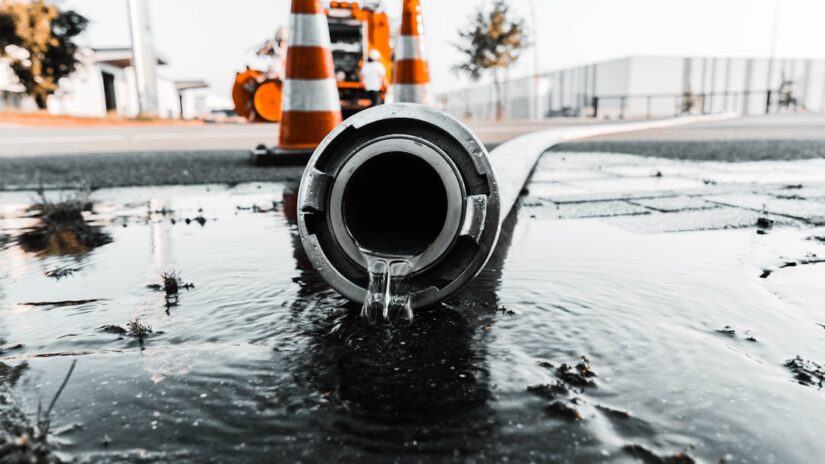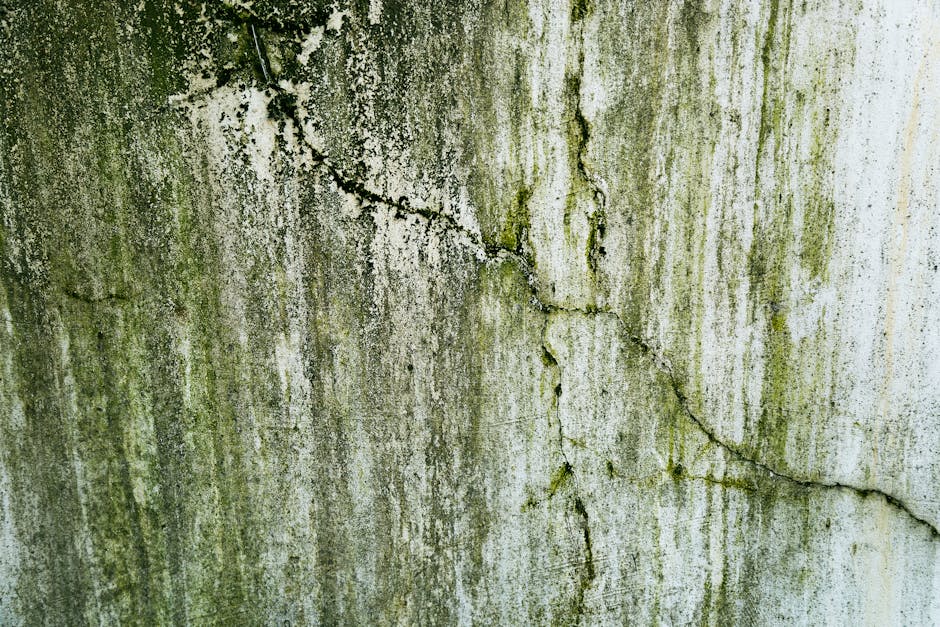Foundation Fissures: Detecting Water Leaks Under Slabs
By Brian on March 18, 2025

How to detect a water leak under a slab foundation is a pressing concern for homeowners, particularly in regions like Northern California, where plumbing issues can quickly escalate. A water leak beneath the slab foundation of a home can spell disaster, leading to serious foundation damage if not promptly addressed. To quickly understand if you’re facing this critical issue, here are some important steps:
- Check for unusual spikes in your water bill.
- Listen closely for the persistent sound of running water.
- Look for warm spots on your flooring or damp carpet areas.
- Monitor any decrease in water pressure.
- Inspect for any visible mold or mildew.
Slab leaks occur when water pipes under a concrete slab develop a leak. Various factors contribute to this, including corrosion, abrasive contact, and even unstable soil conditions. If left unchecked, these leaks can cause significant structural damage, affecting your home’s foundation and leading to costly repairs.
By spotting key signs like unexpected water consumption or flooring imbalances, homeowners can act swiftly to mitigate the potential damages. Recognizing these indicators is crucial, as slab leaks can often remain hidden until they escalate into major issues.
Understanding the process behind detecting these leaks provides you with control over a potentially daunting situation. It’s all about catching the problem early — and knowing what clues to look for is your first line of defense.
Understanding Slab Leaks
Slab leaks can be a homeowner’s worst nightmare, especially when they go unnoticed for long periods. Understanding the causes of these leaks is crucial for prevention and early detection. Here, we dive into the primary factors that lead to slab leaks:
Soil Expansion and Contraction
In regions like Northern California, the soil often expands and contracts due to weather changes. This movement can stress the pipes beneath your home’s foundation. Expansive soil, which swells when wet and shrinks when dry, is particularly problematic. This constant shifting can cause pipes to crack or break, leading to leaks.
Improper Construction or Materials
Sometimes, slab leaks are the result of poor construction practices. If pipes are bent or kinked during installation, they become weak points prone to leaks. Additionally, the use of substandard materials can lead to early corrosion and failure. Older homes with cast iron or galvanized pipes are especially vulnerable to these issues.
Pipe Abrasion and External Pressures
Pipes under your slab foundation can rub against surrounding materials like concrete or soil. Over time, this friction causes wear and tear, leading to leaks. Hot water pipes are even more susceptible due to expansion and contraction with temperature changes. External factors like tree roots or ground shifts can also exert pressure on pipes, causing them to fail.
Chemical Reactions
Water chemistry plays a significant role in the longevity of your pipes. If the water is too acidic or alkaline, it can corrode the pipes, leading to leaks. The soil and concrete’s chemical composition can also contribute to this corrosion. This is particularly true for copper pipes, which are highly susceptible to chemical reactions.

Understanding these factors helps in recognizing the potential for slab leaks and taking preventative measures. By being aware of the signs and causes, homeowners can take proactive steps to protect their homes from the costly damage slab leaks can cause.
How to Detect a Water Leak Under a Slab Foundation
Detecting a water leak under a slab foundation can feel like searching for a needle in a haystack. However, there are effective visual inspection techniques and advanced detection tools that can help you pinpoint the problem.
Visual Inspection Techniques
Start with a visual inspection. Look for cracks or discoloration on your floors and walls. These can be signs that water is seeping through the slab.
-
Cracks: Check for any new or widening cracks in the concrete or walls. These might indicate that water pressure is causing structural shifts.
-
Discoloration: Look for areas where the paint or flooring appears discolored. This can be a sign of moisture seeping up from below.
-
Mold and Mildew: Mold growth often accompanies leaks. If you notice a musty smell or visible mold, it could be due to a slab leak.

Advanced Detection Tools
When visual inspections aren’t enough, turn to advanced detection tools. These can help locate leaks more precisely.
-
Acoustic Devices: These tools amplify the sound of water moving through pipes, making it easier to detect leaks. If you hear the sound of running water when all faucets are off, a leak might be present.
-
Infrared Cameras: These cameras detect temperature changes in the slab. Hot spots might indicate a hot water leak, while cooler areas could suggest water pooling.
-
Pressure Tests: By isolating sections of your plumbing and monitoring the pressure, you can identify drops that signal a leak.
Other Signs to Consider
-
Unexplained Increase in Water Bills: A sudden spike in your water bill without a change in usage could indicate a hidden leak.
-
Water Pressure Changes: If your water pressure drops unexpectedly, it might be due to a leak diverting water away from your fixtures.
Using a combination of these methods will help you detect a water leak under a slab foundation efficiently. Early detection is key to preventing further damage and costly repairs.
Next, we’ll explore the common signs of slab leaks and what they mean for your home.
Common Signs of a Slab Leak
Slab leaks can cause serious damage if left unchecked. Here are some common signs that you might have a slab leak lurking beneath your home:
Water Spots
One of the most obvious signs of a slab leak is the appearance of water spots on your floor. These spots might seem like random damp areas, but they are often a clear indication that water is seeping up from below the slab. If you notice these spots, it’s crucial to investigate further.
Flooring Gaps
Slab leaks can cause your flooring to shift, leading to noticeable gaps between your flooring and the walls. This happens because the water undermines the slab, causing parts of it to sink or shift. If your doors or windows are suddenly difficult to open or close, this could also be a sign of shifting foundations due to a slab leak.
Mold Increase
An increase in mold and mildew in your home is another red flag. Mold thrives in damp environments, so if you notice a musty smell or see mold growing in unexpected places, it could be due to moisture from a slab leak. Mold not only damages your home but can also pose health risks to you and your family.
Foundation Cracks
Perhaps the most alarming sign of a slab leak is the appearance of cracks in your foundation. As water seeps through the slab, it can weaken the foundation, leading to cracks. These cracks can compromise the structural integrity of your home, making it crucial to address them promptly.
If you notice any of these signs, it’s important to act quickly. Slab leaks can lead to extensive damage, but early detection and repair can save you time and money. In the next section, we’ll explore the various repair options available for slab leaks.
Repair Options for Slab Leaks
When dealing with a slab leak, choosing the right repair method is crucial to prevent further damage to your home. Here are the top options available:
Trenchless Repair
Trenchless repair is a modern, minimally invasive method that requires only small access holes. This technique is less destructive than traditional methods and often more cost-effective.
Here’s how it works:
- Epoxy Pipe Lining: Specialists use epoxy to line the inside of the existing pipe. This seals any leaks and creates a new pipe within the old one.
- Pipe Splitting: If the damage is severe, a new pipe can be pulled through the old one, splitting the damaged pipe apart.
The entire process is quick, often completed in just a few hours, and it keeps your yard and floors largely intact.
Pipe Re-Routing
Pipe re-routing involves installing new pipes to replace the damaged ones. This method is often used when multiple pipes are affected.
- Demolition may be necessary if pipes under floors or inside walls need replacing.
- This method can take several days, and you might need to vacate your home temporarily.
While more invasive, re-routing ensures a leak-free system and is ideal for extensive damage.
Tunneling
For those looking to preserve their flooring, tunneling is an excellent option.
- Crews dig tunnels under your home to reach and repair the affected pipes.
- This method keeps the mess outside, allowing you to stay in your home during repairs.
Tunneling is particularly useful for homes with expensive or delicate flooring that homeowners wish to protect.
Each repair option has its benefits and is suitable for different situations. Consulting with a professional can help determine the best method for your specific slab leak issue. In our next section, we will answer some frequently asked questions about slab leaks to further assist you in understanding and managing this common household problem.
Frequently Asked Questions about Slab Leaks
How can I tell if I have a water leak under my slab?
Detecting a water leak under a slab foundation can be tricky, but there are some clear signs to watch for:
-
Hot Spots: If parts of your floor feel unusually warm, it might indicate a hot water pipe leak. Pets often find these warm spots cozy and may linger there.
-
Water Pressure: A sudden drop in water pressure can be a clue. If your showers are less powerful, there might be a leak diverting water away.
-
Sound of Water: Hearing the sound of running water when all faucets are off is a classic sign. This could mean water is escaping from a pipe beneath the slab.
How long can a slab leak go undetected?
Unfortunately, slab leaks can go unnoticed for weeks or even months. During this time, they can cause significant damage. This is why it’s crucial to pay attention to any signs like increased water bills or unexplained moisture.
- Weeks to Months: Slab leaks often develop slowly, making them hard to catch early. Regular inspections can help catch these leaks before they lead to major damage.
Does insurance cover water leak under slab?
Insurance coverage for a water leak under a slab can vary based on your policy:
-
Dwelling Coverage: This might cover the cost of repairing the damage caused by the leak, such as flooring or drywall repairs.
-
Plumbing Repair: Most standard policies don’t cover the repair of the actual pipe, but they may cover the resulting damage.
-
Insurance Policy: Always check your specific policy details or speak with your insurance provider to understand what is covered. Some policies offer specific endorsements for plumbing issues.
Understanding these aspects can help you manage your slab leak effectively and ensure you’re prepared if one occurs.
Conclusion
Detecting a water leak under a slab foundation early can save you time, money, and a lot of stress. Slab leaks, if left unaddressed, can cause significant damage to your home, including foundation cracks, mold growth, and increased water bills.
At Go Pro Plumbing, we understand the importance of early detection and prompt action. Our team is committed to delivering outstanding customer service and offers same-day service to address your plumbing needs efficiently. With our expertise and advanced tools, we can quickly identify and resolve slab leaks, minimizing disruption to your home.
Ignoring the signs of a slab leak can lead to costly repairs down the road. If you suspect a leak, don’t wait. Contact us today to schedule an inspection. Our friendly and professional team is ready to help you protect your home and ensure your plumbing system is in top shape.

